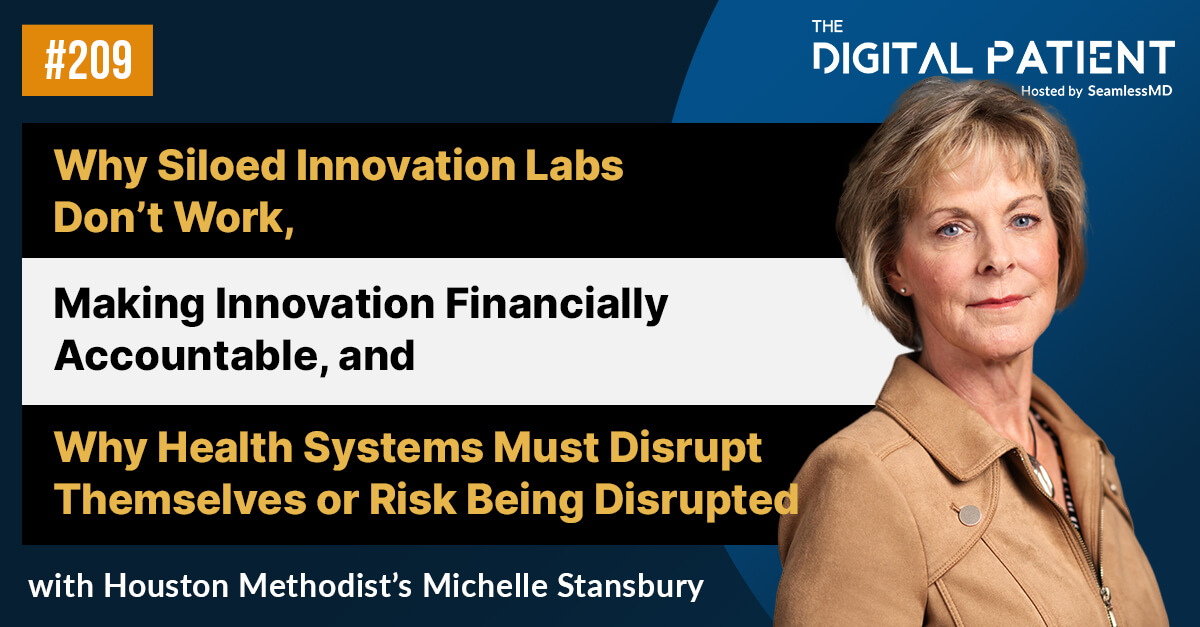The benefits of reducing hospital length of stay (LOS) are well-known, including:
- Decreased operating costs and increased profit margins;
- Increased patient throughput and overall hospital capacity;
- Increased revenue from new patient volume;
- Reductions in falls and hospital-acquired infections; and
- Higher patient satisfaction;
The COVID-19 pandemic has further increased pressure on hospitals to reduce LOS, so that they can meet the demands of both COVID-19 hospitalizations and pre-existing patient needs (e.g. surgeries). However, with limited resources and increasing staff burnout, organizations must find innovative ways to reduce LOS without increasing work for providers.
“What’s coming now is the surgical backlog, so we’re going to have to increase the amount of surgery just to catch up, and we’re going to need tools to support patients virtually” explained Nicole Graham, Clinical Manager of Outpatient Rehab, Health Sciences North.
Engaged patients lead to improved hospital operations
Patients are often our most under-utilized partners in achieving a healthier, safer, and higher performing healthcare system. Research has shown that patients who are more engaged and adherent to their care plans have lower LOS and complications.
However, traditional methods of patient engagement have heavily relied on healthcare providers to bear the burden of constant patient education, monitoring compliance with instructions, and checking-in on patient status (e.g. post-discharge phone calls).
Digital platforms enable healthcare teams to achieve patient engagement at scale and lower LOS
To tackle this, leading health systems are turning to Digital Patient Engagement platforms to lower LOS, while reducing demands on staff for patient education. Via an App on the patient’s smartphone, tablet or desktop computer, these platforms automatically remind patients to follow their care plans, empower patients to track their progress and symptoms, and only notify the care team if the patient is off-track or showing signs of risk.
Many health systems have used Digital Patient Engagement platforms to reduce LOS:
- Baystate Health reduced LOS by 0.9 days for Cardiac surgery
- UAB Health System reduced LOS by 2 days for Ileostomy procedures
- Rush University Medical Center 2 days for Colorectal surgery
- Thunder Bay Regional reduced LOS by 3.4 days for Spine Surgery
What strategies are these innovative organizations using with these Digital Patient Engagement platforms to achieve these results?
Strategy #1: Automatically set clear expectations for a shorter inpatient stay and earlier discharge
With the shift to same-day surgery and shorter LOS compared to decades past, a key strategy to getting patients home sooner is simply effective and timely communication on these new expectations. If patients are expecting a shorter stay, they will be better prepared.
Digital Patient Engagement platforms can be used to deliver just-in-time education on expectations for same-day or early discharge - how patients can prepare for this and why it’s important.

Strategy #2: Improved patient compliance with care plans and early discharge criteria
In this podcast, Dr. Daniel Chu, Vice Chair of Health Services Research for UAB’s Department of Surgery, described his research on the role Digital Patient Engagement plays in increasing patient compliance with evidence-based care plans to reduce LOS:
“We know that the more adherent the group is with Enhanced Recovery, the shorter the length of stay… “Enhanced Recovery is about adherence to those components… these patient engagement technologies, they help patients understand why these components are important… Technologies are an adjunct to reinforce the best practices we know need to be followed.”
This makes sense because research shows that increased patient compliance with evidence-based protocols (e.g. early ambulation after surgery and other Enhanced Recovery After Surgery / ERAS elements) leads to reduced LOS. However, patient compliance is often low when hospitals must rely on overworked providers to keep patients on track.
Instead, Digital Patient Engagement platforms can enhance the effectiveness of the evidence-based care plans already in place, by automatically reminding and reinforcing patients to stay on track.

Digital Patient Engagement platforms can also automatically prompt patients to track progress against hospital discharge criteria and give feedback to motivate better compliance - all without involving the care team.
For example, empowering patients to track how well they are ambulating, and get automatic feedback on whether they are ambulating well enough to safely go home, can motivate patients to meet ambulation goals to be discharged sooner. Providers can also access this data via dashboards to better understand patient compliance.

Strategy #3: Improve confidence of both patient & provider for earlier discharge
“This is a confidence builder… we’re not just preparing them for surgery, we’re preparing them for discharge home,” Caroline Fanti, Director of Surgical Services, discusses in this podcast regarding how Thunder Bay Regional Health Sciences Centre uses their Digital Patient Engagement platform to increase same-day surgery and earlier discharge: “The App, in terms of self-management and providing patients with all the information they need… and ability to connect with us immediately or send us alerts, has been instrumental in helping the patient mindset with discharge home - recognizing that it will improve the safety of their experience.”
Near the end of their hospital stay, patients may not “feel ready to go home alone” and instead may hope to stay in hospital 0.5 to 1 day longer than they need to. Providers also often wish to “monitor the patient for 1 extra day in hospital just in case”, since they are unable to keep an eye on them at home.
However, knowing they can be supported by a Digital Patient Engagement platform, patients feel more supported at home and feel safer going home sooner. Similarly, providers are more willing to discharge patients sooner knowing patients they can monitor patients remotely if they wish.
Want to learn more?
.svg)










.png)
